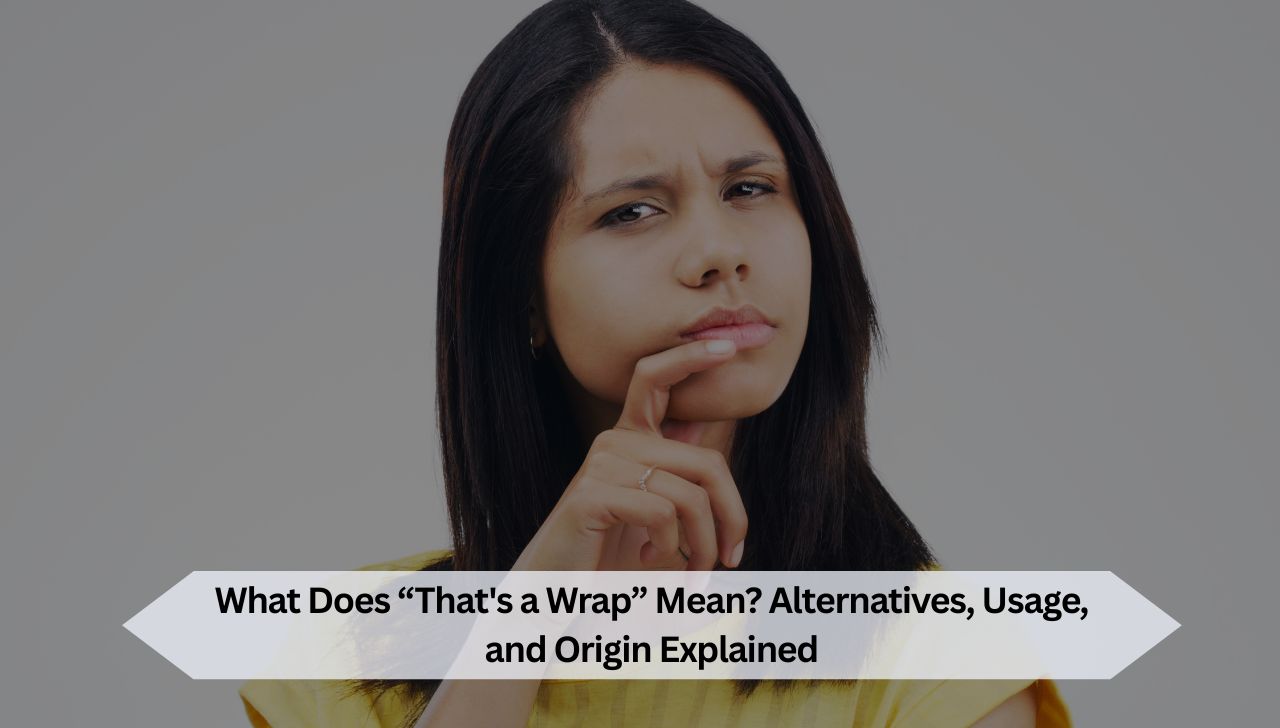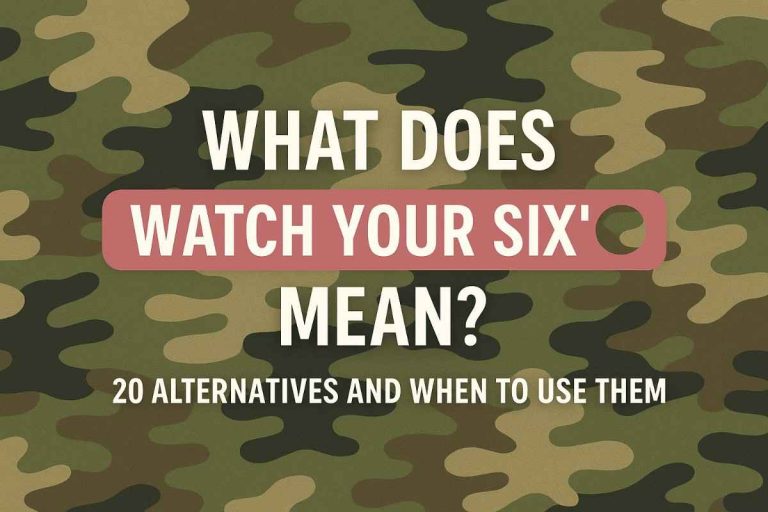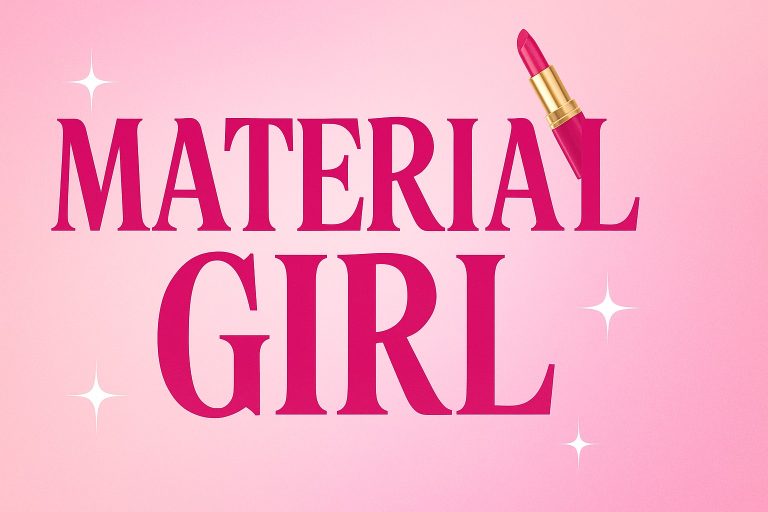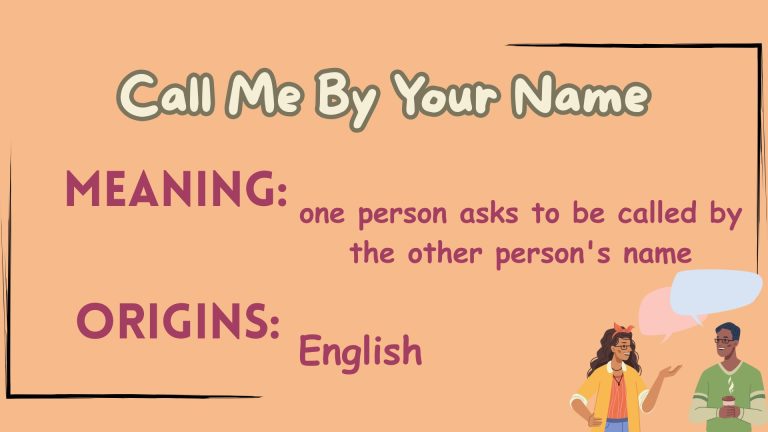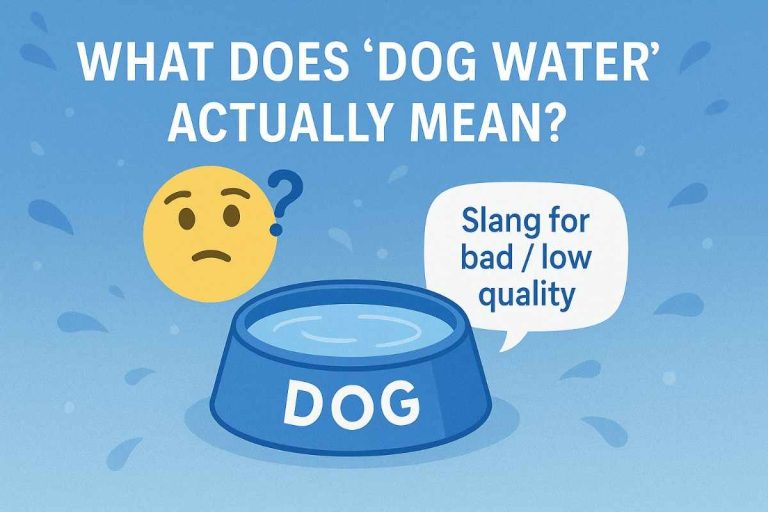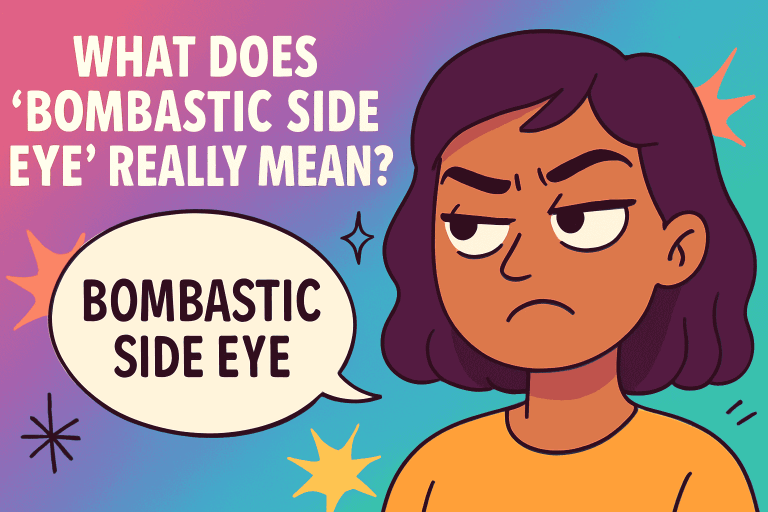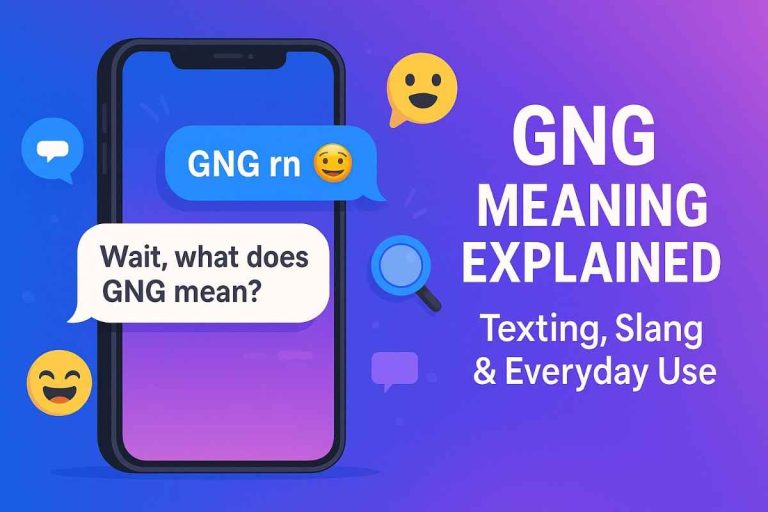What Does “That’s a Wrap” Mean? Alternatives, Usage, and Origin Explained
You’ve probably heard someone say “that’s a wrap” after a meeting, video shoot, or group project. It sounds casual, yet final—like something has ended and it’s time to pack up. But what does it really mean? And when should you use it?
This phrase may sound relaxed, but it has deep roots in film and production. Over time, it’s found a home in everyday speech and even in the workplace. Let’s break it down and look at some cleaner, more professional alternatives too.
What Does “That’s a Wrap” Mean?
The phrase “that’s a wrap” means something is finished or complete. You’ve hit the final step, and it’s time to close things down. It can refer to the end of a meeting, a workday, a photo shoot, or even a big task.
The word wrap here refers to wrapping up film equipment—literally. In its early days, this was a cue to pack up the set. Now, it’s used more loosely to mean, “We’re done here.” It often carries a casual tone, almost celebratory. Like a final high-five after a job well done.
Don’t Miss This: Understanding “Down Bad”: Origins, Meaning, and 25 Alternative Phrases for Modern Slang
When to Use “That’s a Wrap”
Even though it started in Hollywood, the phrase is now used in all kinds of work and casual settings. Here’s when it fits best:
- After a project ends – You’ve completed the task. No more edits, updates, or changes.
- At the end of filming or a photo shoot – Common in creative industries.
- Closing a meeting – You’re signaling that all points are covered and it’s time to go.
- End of the day – You’re done working and getting ready to clock out.
Keep in mind: this phrase is best used in informal or creative settings. In corporate or more traditional workplaces, it might sound too casual or even confusing. That’s where a more polished version might help.
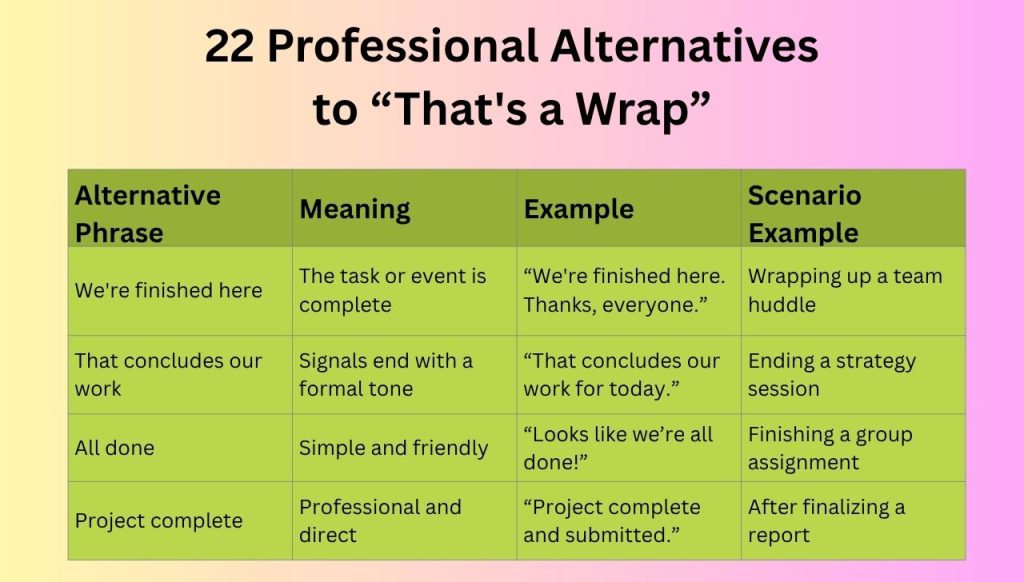
22 Professional Alternatives to “That’s a Wrap”
Sometimes, you want to sound a bit more formal—or just change it up. Here are 22 clean, professional alternatives you can use instead of “that’s a wrap.” Each one can fit slightly different tones or contexts.
| Alternative Phrase | Meaning | Example | Scenario Example |
|---|---|---|---|
| We’re finished here | The task or event is complete | “We’re finished here. Thanks, everyone.” | Wrapping up a team huddle |
| That concludes our work | Signals end with a formal tone | “That concludes our work for today.” | Ending a strategy session |
| All done | Simple and friendly | “Looks like we’re all done!” | Finishing a group assignment |
| Project complete | Professional and direct | “Project complete and submitted.” | After finalizing a report |
| We’re good to go | Everything’s ready or finished | “We’re good to go—great job.” | After setting up for an event |
| Time to wrap up | Slightly more casual, but still clear | “Alright, time to wrap up.” | Near the end of a video conference |
| Task completed | Short and formal | “Task completed as requested.” | Updating a supervisor |
| Closing out | Signaling shutdown of a session or task | “We’re closing out now.” | Wrapping up a webinar |
| That brings us to the end | Smooth, polite conclusion | “That brings us to the end of today’s talk.” | Ending a lecture or formal meeting |
| We’re closing things down | More casual but polite | “We’re closing things down for today.” | Wrapping a group discussion |
| We’re done here | Firm and clear | “We’re done here—thanks for the great work.” | Finishing a creative shoot |
| Mission accomplished | Confident and lighthearted | “Mission accomplished—well done!” | Wrapping up a successful team launch |
| Finalized | Professional and neat | “Finalized. No further edits needed.” | After approval of a deliverable |
| End of line | Clear finish point | “This is the end of the line for this phase.” | Wrapping up a development sprint |
| Signing off | Common in media and digital work | “Signing off now—thanks, everyone.” | Ending a live stream or broadcast |
| Done and dusted | Casual, confident | “That’s done and dusted!” | Finishing a checklist |
| We’re closing out for now | Leaves room for future work | “We’re closing out for now.” | Temporary project pause |
| That’s all for today | Clear and simple | “That’s all for today. See you tomorrow.” | Daily team update |
| Mark it complete | Functional and task-focused | “Let’s mark it complete.” | Project management context |
| We’ve completed our goals | Reflective and organized | “We’ve completed our goals—nice work.” | After goal-setting session |
| We’ve reached the end | Poetic but clear | “We’ve reached the end of this journey.” | Formal presentation close |
| It’s officially done | Confident and celebratory | “It’s officially done—excellent job!” | Celebrating a team milestone |
These phrases help shift the tone depending on your audience—some lean formal, some are relaxed but still professional. Feel free to tailor your sign-off to your team or situation.
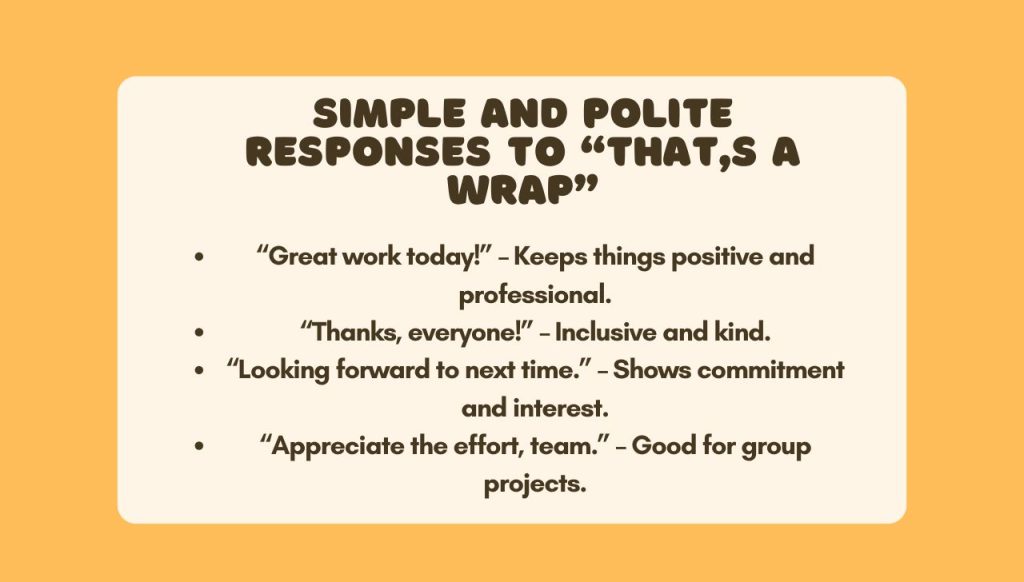
Simple and Polite Responses to “That’s a Wrap”
So, someone just said “That’s a wrap!”—what should you say back?
Here are a few easy and polite ways to respond:
- “Great work today!” – Keeps things positive and professional.
- “Thanks, everyone!” – Inclusive and kind.
- “Looking forward to next time.” – Shows commitment and interest.
- “Appreciate the effort, team.” – Good for group projects.
- “Alright, signing off.” – Matches the tone.
- “Take care!” – Simple and warm.
- “Catch you tomorrow.” – Casual follow-up.
- “Let’s do it again soon.” – Encourages future collaboration.
These responses help maintain a good vibe and end things on a respectful note.
How “That’s a Wrap” Became Popular in Film and TV
The phrase “that’s a wrap” started in the world of film production. After the last scene was shot, directors or producers would shout, “That’s a wrap!” as a signal to pack up the set. It marked the end of filming—literally wrapping cables, gear, and set items.
The first recorded use dates back to the early 20th century, and it caught on fast. As film culture grew, so did the phrase. Over time, it became shorthand for completing not just movies, but any big creative task. From there, it moved into TV, advertising, music videos, and digital content creation. Today, even tech startups and marketing teams use it. It’s a way of saying, “We did it”—with a bit of flair.
Thanks to its Hollywood roots, it also adds a touch of style. Saying “that’s a wrap” can make a moment feel bigger—like you’ve just finished something worth celebrating.
Check This Out: The Meaning of a Soda Tab: History, Slang, and Its Cultural Significance
Conclusion
“That’s a wrap” might have started in the movies, but it now fits in offices, Zoom calls, creative sessions, and beyond. It’s short, expressive, and signals a clear end. Still, not every situation calls for a Hollywood-style sign-off.
That’s why having alternatives is helpful. Whether you’re leading a boardroom meeting or working on a creative shoot, the right closing line helps set the tone. So next time you finish a project or wrap up a meeting, you’ll know exactly what to say—and maybe how to say it better.
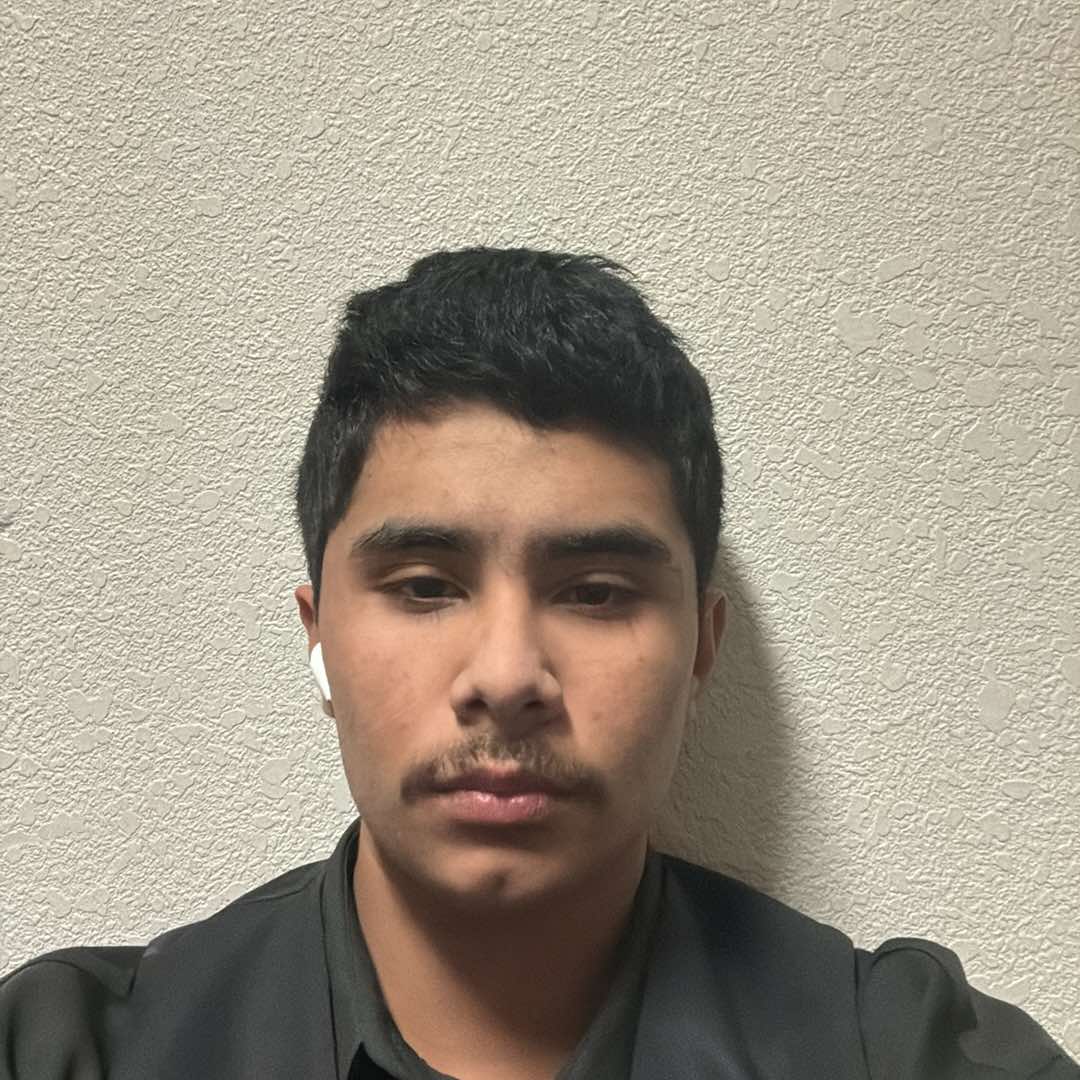
A former editor and grammar geek, David Langford has spent years refining the art of clear communication. He combines his journalism background with a knack for teaching, offering straightforward tips to master tricky grammar rules. When he’s not proofreading, he’s probably debating Oxford commas.

